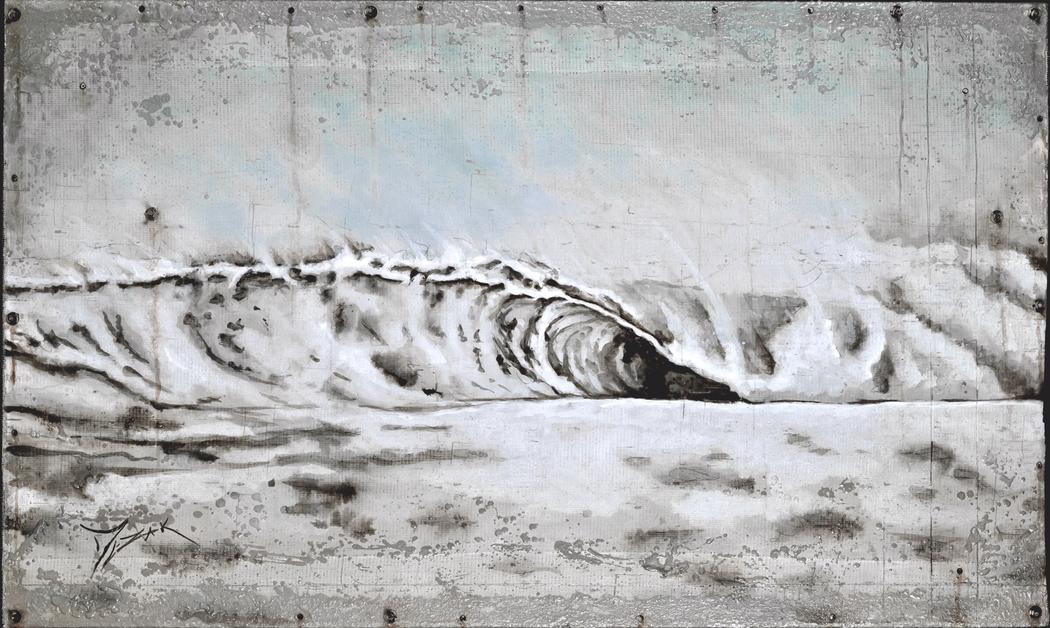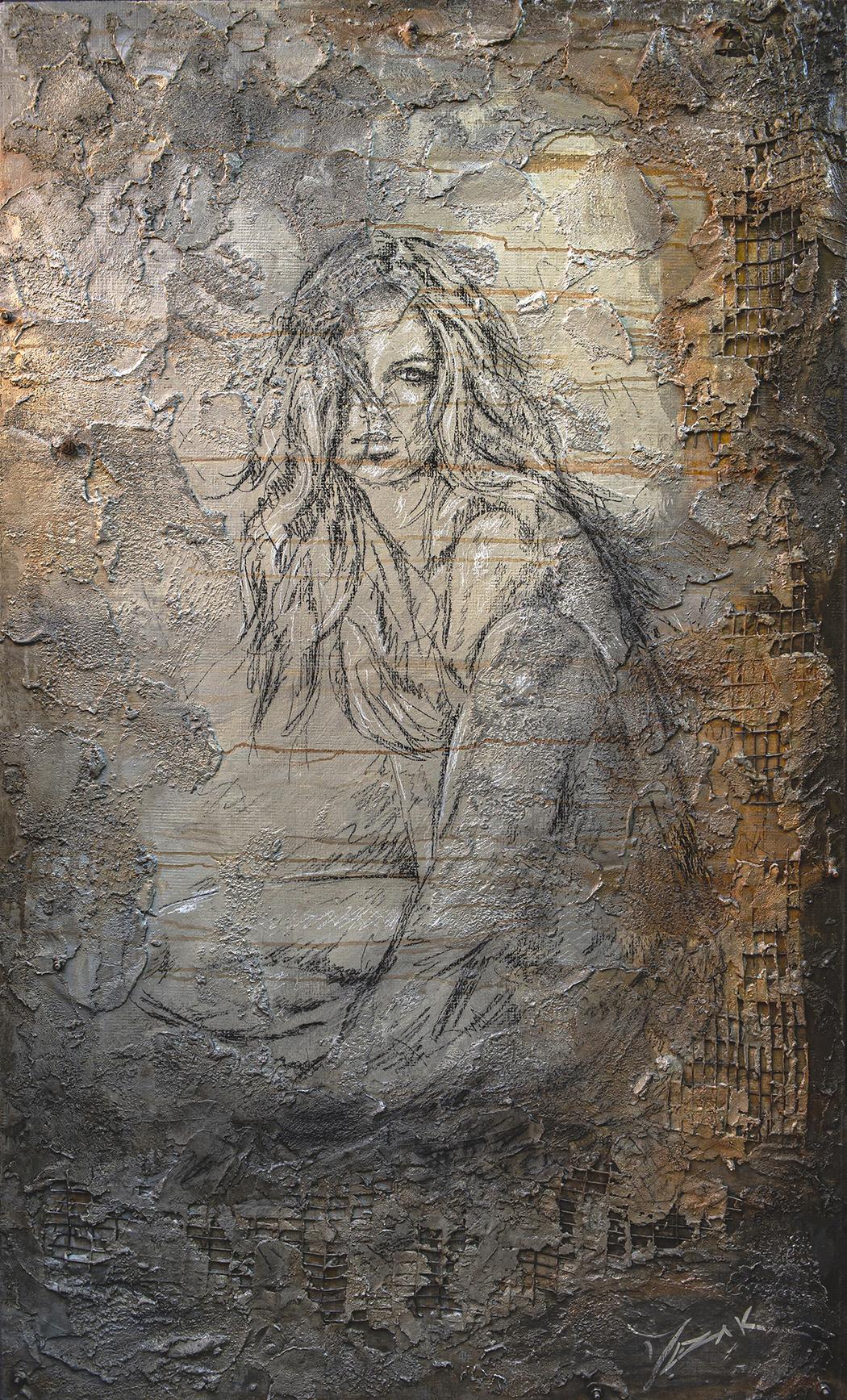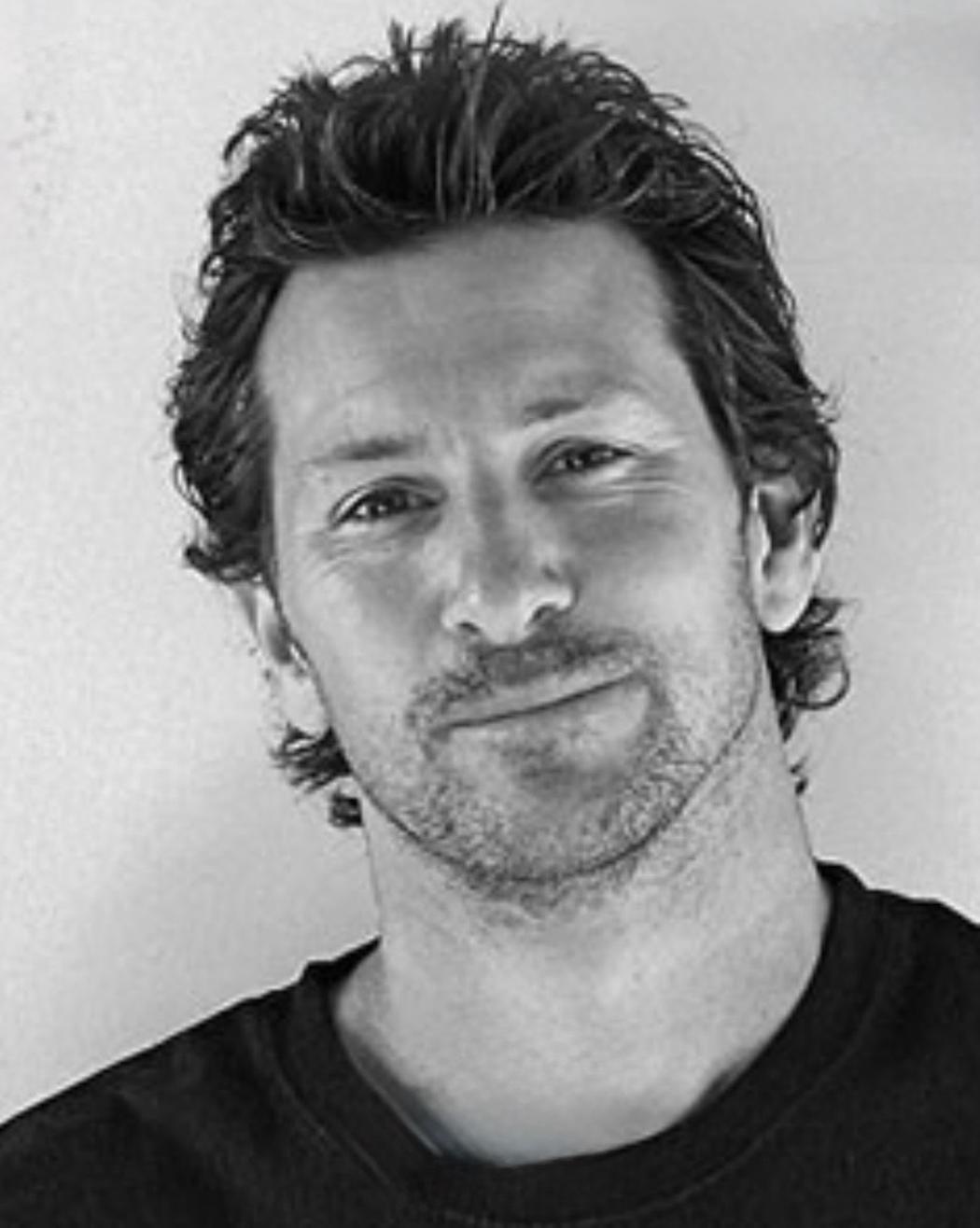Trevor Mezak
Your journey with art began with learning manual labor and tools from your father. In what ways do those early memories still shape your creative decisions today?
When I first started painting, I was always drawn to texture. I discovered the palette knife early on—it just felt right in my hand—it gave me a sense of control and freedom at the same time—but something was still missing. The textures didn’t feel raw enough, too refined, too predictable. The real shift happened when I decided to paint something just for myself. I discarded most of my conventional art supplies and started using materials that made sense to me. I wanted something honest and gritty, so I started pouring concrete, adding metal, rusty bolts, and tar. It wasn’t until later that I realized why those elements felt so natural to me—they were part of my childhood. I’d spent years working with my dad, surrounded by those same materials. In a way, I’d come full circle—bringing pieces of my past into my art without even realizing it.
Surfing clearly plays a huge role in your life. How do you translate the physical rush and unpredictability of the ocean into texture on your works?
Surfing drew me in because the ocean is never the same twice. Every wave, every day is different—and I think that sense of unpredictability shows up in my art. I’m always experimenting, trying new materials, and seeing what happens. I want that same energy and movement to come through in my paintings.
 Trevor Mezak | Sand Spit | 2023
Trevor Mezak | Sand Spit | 2023
Your materials — metal, concrete, reclaimed wood, gunpowder — are usually associated with construction, not fine art. What draws you to these raw elements?
I’m drawn to real, organic materials—things that have lived a life. I’m not interested in anything too manufactured. In my drawings, I like using raw charcoal; there’s a beauty in its simplicity and imperfection. A lot of my inspiration comes from rusted metal and weathered concrete walls—surfaces that show time and wear. There’s something compelling about blending those raw, broken-down elements with the refined beauty of a charcoal drawing. I love the challenge of creating something beautiful out of what’s been discarded.
Many of your artworks juxtapose the industrial and the human figure. What does that relationship symbolize for you?
To me, adding the human form to industrial materials is like merging strength and vulnerability. Taking something cold and industrial and adding warmth and humanity creates a dynamic balance.
 Trevor Mezak | Sweet Little Angel | 2024
Trevor Mezak | Sweet Little Angel | 2024
Can you describe a moment in the studio when the material resisted or surprised you — and how you responded creatively?
I remember the first time I used gunpowder on a painting—I was a little worried, thinking it might explode or leave a big flash burn. Instead, it burned much slower than I expected. Rather than turning black, it left a beautiful gold-colored trail. Discovering that different types of gunpowder each have their own unique color and burn pattern, I began using it to create shadows, texture, and highlight effects.
Viewers often try to “touch” your work because of the texture. How important is physical tactility as part of the viewer experience?
I think it’s one of the most distinctive and recognizable aspects of my work. It’s something that photos can never fully capture. However, in person, it invites people to slow down and really look closely. I love seeing viewers’ reactions at shows—there’s something special about that first moment when they realize how much material and depth is built into each piece.
 Trevor Mezak | Then I Met You | 2023
Trevor Mezak | Then I Met You | 2023
The ocean appears as both subject and energy in your practice. What have the waves taught you about patience, surrender, or perseverance?
The ocean is an incredible teacher. I’m not a naturally patient person, but it’s taught me that if you push too hard or try to force things, it usually isn’t meant to be. There’s such a fine balance—both in art and in surfing—between technique and flow. You’re always learning, always adapting. Both require total dedication, and I’ve shaped my life around them. Success doesn’t come easily, but that’s what keeps me striving to improve, to learn more, and to keep pushing boundaries.


Leave a Reply